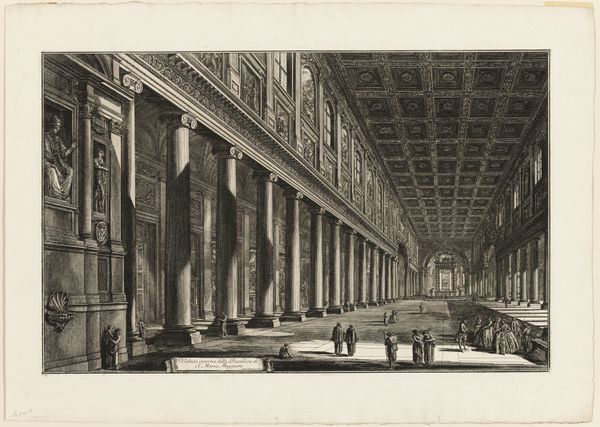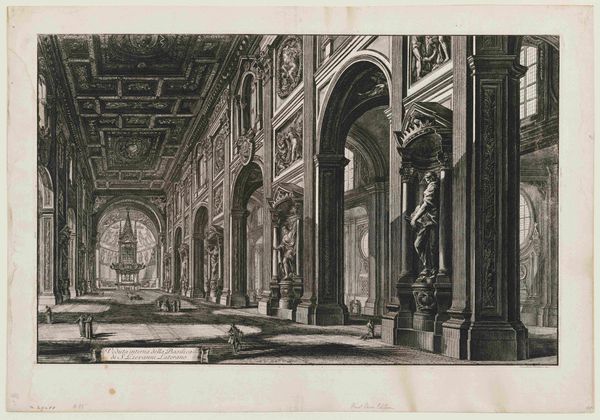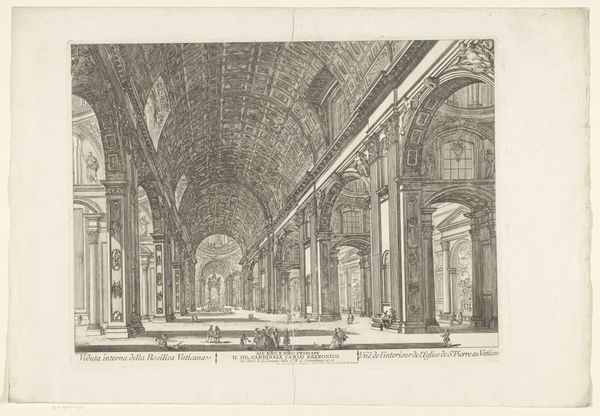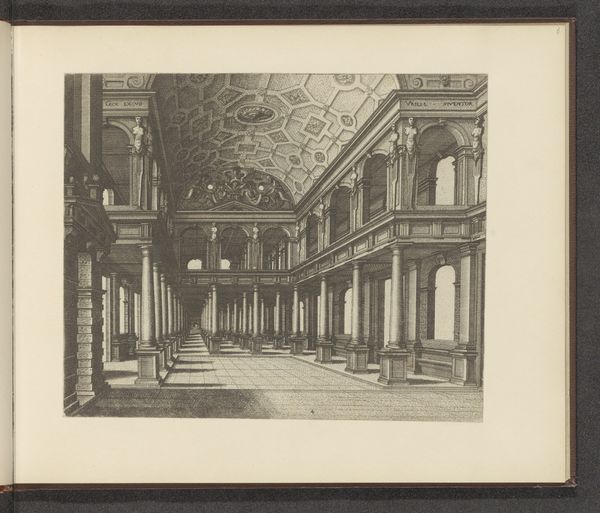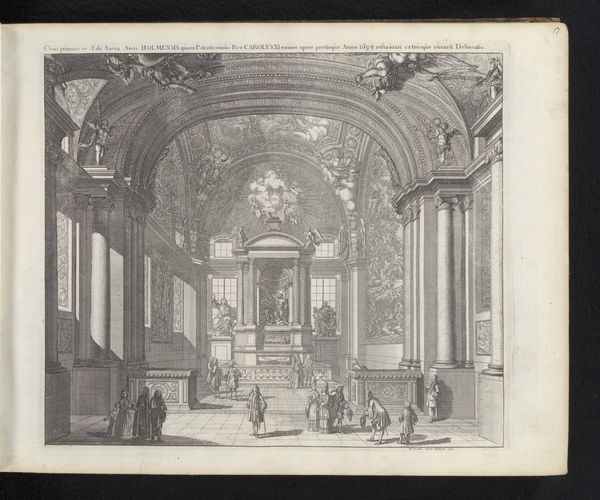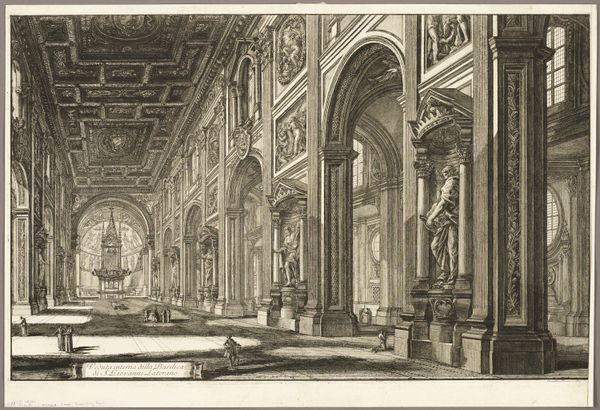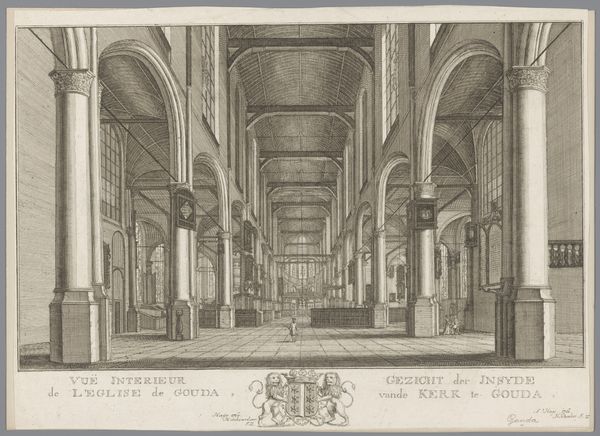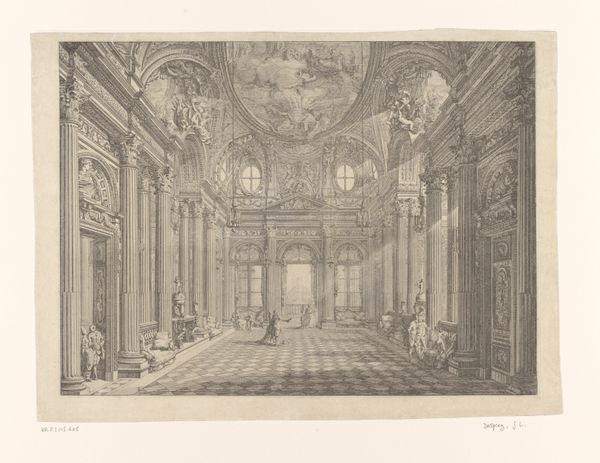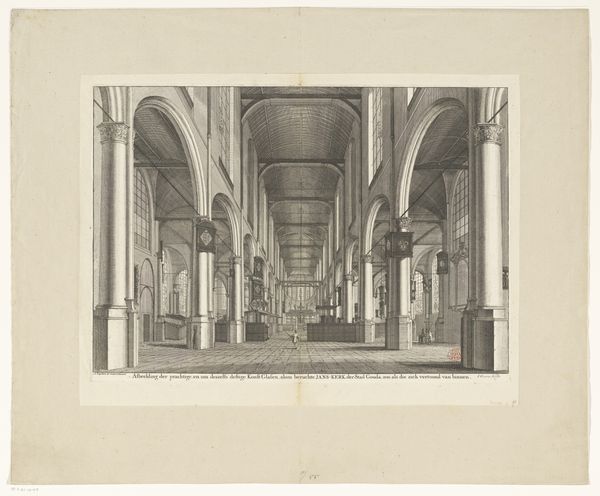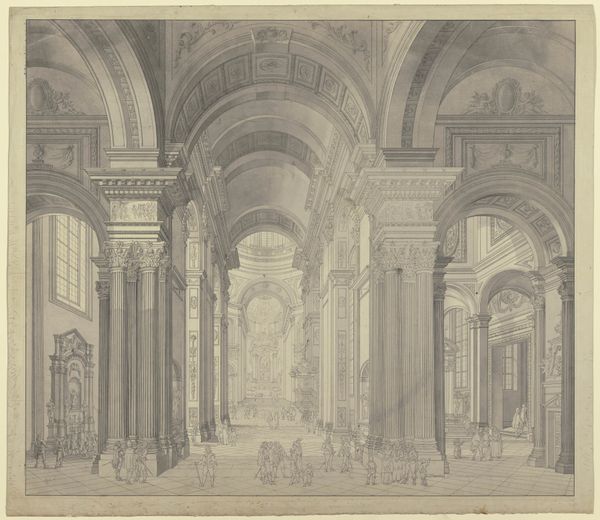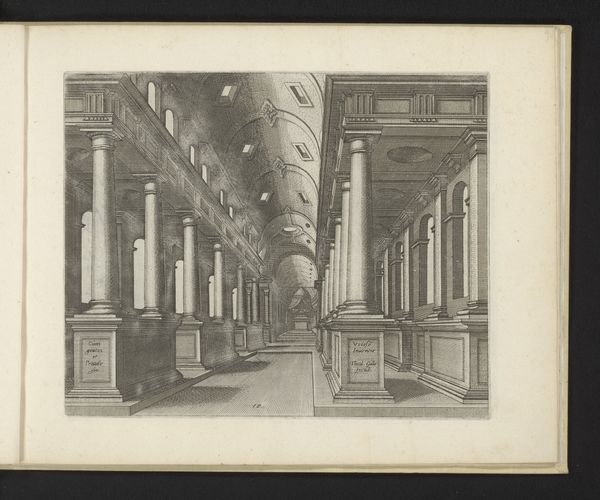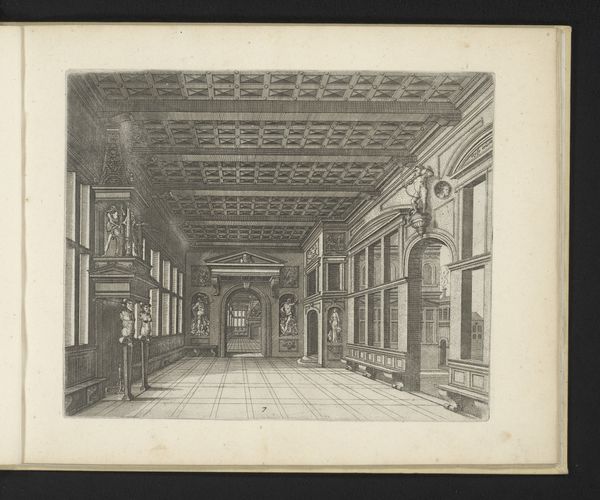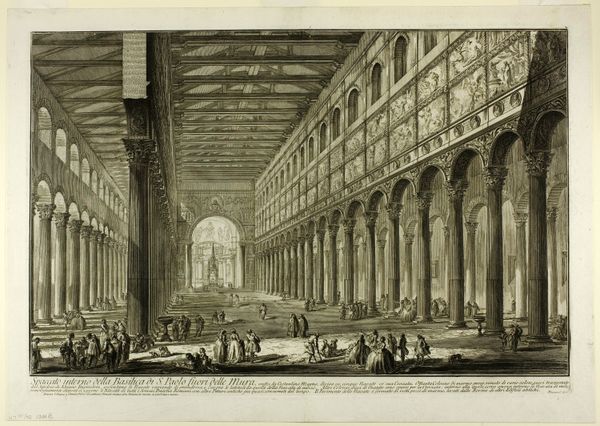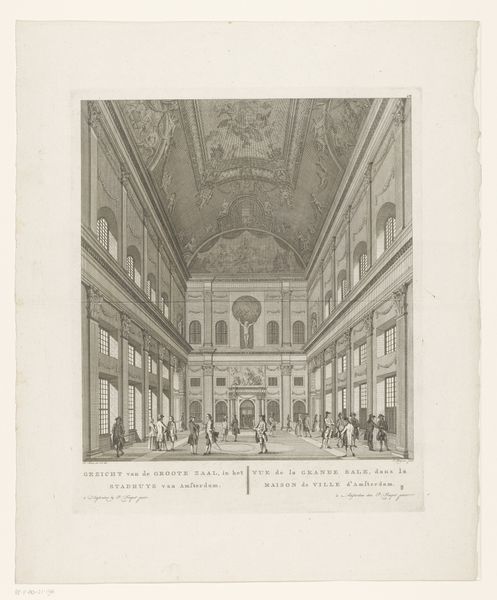
Basilica Santa Maria Maggiore - Interior 1768
0:00
0:00
print, etching, architecture
# print
#
etching
#
perspective
#
history-painting
#
italian-renaissance
#
italy
#
architecture
Dimensions: 17 1/16 x 26 3/4 in. (43.34 x 67.95 cm) (plate)20 3/8 x 30 1/8 in. (51.75 x 76.52 cm) (sheet)
Copyright: Public Domain
Curator: Wow, look at that dizzying depth. I feel like I could fall right into this Piranesi print. It's almost unsettling! Editor: Indeed. What we are looking at here is Giovanni Battista Piranesi's "Basilica Santa Maria Maggiore - Interior," created around 1768. He captured it through etching, showcasing his incredible skill with perspective. Curator: "Capturing" is the right word. It feels less like observation and more like he wrestled the building onto the page. Those lines are so precise, it almost feels cold. Editor: The Basilica, and by extension Piranesi’s print, becomes a powerful statement on institutional power, doesn't it? These religious structures weren't just about faith, but about controlling visual space, controlling bodies... Curator: But is it, though? I get that, I really do, but it almost feels like Piranesi is in awe. It’s the *sublime*, right? He's using this perspective trick to make it bigger, to amplify the grandeur. Almost like he *wants* to be overwhelmed. It tickles me, you know? To see this monument and also glimpse the mundane—these teeny, tiny figures strolling about, having their little conversations against this backdrop of overwhelming architectural pomposity. The scale of this is everything. Editor: Exactly, the diminishment of figures—aren’t we always dwarfed by such imposing spaces, especially if we come from a marginalized background, structurally and otherwise? The architecture represents a specific set of power relations; Piranesi presents this clearly through composition. The details almost vanish towards the vanishing point. Curator: Right, and I'm wondering if he intended that commentary or simply got lost in the art of perspective. Or was it perhaps both? That tiny kneeling figure in the foreground really makes me consider. I also like how dark he rendered the shadows. He really lets you sense the temperature inside—cold stone! Editor: And that, to me, speaks to Piranesi’s critical perspective on architecture—more specifically sacred architecture. It offers a space for analyzing how ideology becomes visually entrenched in space. Curator: Well, for all its chilling grandeur and stark precision, I leave with this feeling of smallness and the ticklish feeling of standing in contrast to great figures. Editor: Ultimately, Piranesi's work encourages a critical dialogue, questioning the narratives that are physically built into our surroundings.
Comments
No comments
Be the first to comment and join the conversation on the ultimate creative platform.
